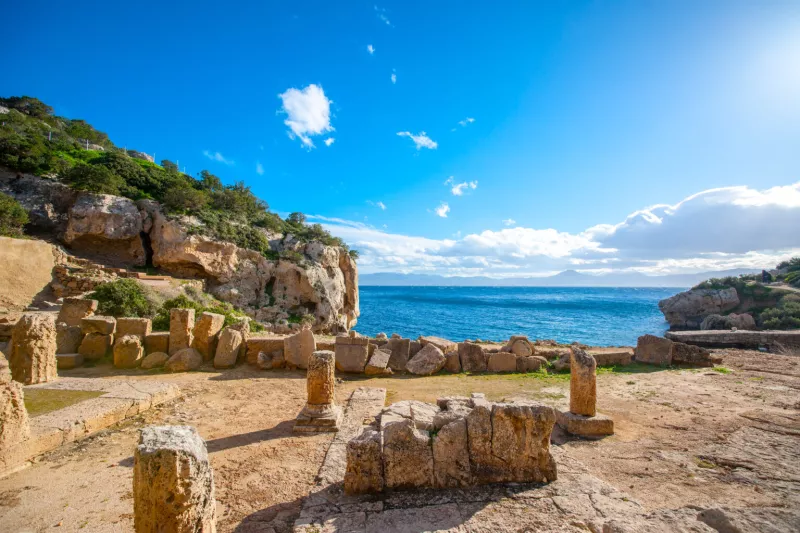By Nicolas Bard
Loutraki is a seaside town in the prefecture of Corinth, numbering about 12,000 permanent residents. It is 84 kilometers from Athens and only 4 kilometers from Corinth. It is a recognized and renowned spa town since 1925, a tourist resort known for its thermal baths, its mineral waters, the famous thermal spa located in the center of the city and of course its famous casino.
It is wet by the Corinthian Gulf, and is the seat of the Municipality of Loutraki-Perachora-Agioi Theodore, while behind the city the imposing Gerania Mountains dominate. Every summer the area is filled with holidaymakers looking for a breath of cool in the blue waters.
In ancient times the area was known as a pierce or peer land, and in the place of Loutraki was the ancient Komi Thermas, known for its thermal springs. They were considered a favorite city of the gods and her patrons was Thermal Artemis. The current name of Loutraki is due, as is easily perceived, in its thermal springs, the baths, which make it one of the most important baths of our country.
The earthquake that changed the face of the city
Loutraki was completely destroyed in 1928 by the strong earthquake of Corinth. Only a few buildings were rescued in the small rocky cape, between the park and the thermal springs. At that time, a reconstruction organization was formed that built many anti -seismic buildings, according to the perceptions of the then style. These are simple, strict two -storey buildings made entirely of concrete. Many of them still exist today on the main road (National Resistance). With the rubbish of the demolished buildings and with lands that retreated from the Grava hill, much on the north side of the coast and created the large municipal park to the east of the city. It was also built the healing source with its characteristic circular shape, decorated internally with rich mosaic, large surface, designed by artists and students of the School of Fine Arts.
On February 24, 1981, Loutraki was hit again, this time by a triple earthquake, resulting in some buildings collapsing and lots of damage. More shocking was the collapse of the eight -storey hotel “Apollo” – located in the area where the casino was later built – and another high -rise hotel, “Kontis” on Corinth Street (which was later built again and re -opened). In the same earthquake we had almost total destruction of Perachora. These damage was followed by extensive work on the strengthening of most buildings of most buildings. Today Loutraki is considered one of the most shielded and anti -seismic structured cities in our country.
What will you see in Loutraki
In the Gerania Mountains, just above Loutraki, lies the Holy Monastery of Saint Patapi, dating from the 11th century. It is accessible by road and offers spectacular views of the northern Peloponnese, the Isthmus of Corinth and the Saronic Gulf. In the area of thermal springs there is the church of St. Andrew, built in 1345 by Ioannis Kantakouzenos.
The Roman villa in the Katunistra area of Loutraki is a luxurious complex dating to the 2nd century. AD. It had a view to the Corinthian, had an impressive bathroom in the southeast and a large pool.
Furthermore, Loutraki operated the first casino of Greece in 1930. Today’s casino has been operating since 1995. At a distance of 14 km to the west there is the Lake of Vouliagmeni, a closed, deep sea bay that communicates with Corinth with a narrow width of 6-8 meters wide. At a distance of 4 km to the south, in the direction of Corinth is the emblematic Corinthian Canal.
Finally, in Perachora, very close to the Vouliagmeni lagoon, there is one of the most important archaeological sites in Greece. The Temple of Hera still raises its ruins against the sea. In 1991 the wider area of Heraion Perachora was declared as a protected archaeological site. Nomination projects have been done and there are information signs that will help you during your tour of the area. On the west side of the peninsula, at the Cape Melagavi, the impressive stone lighthouse with the square tower stands. It is considered one of the most beautiful in Greece and has been designated a historic preserved monument since 2001. Undoubtedly the best time of the day to go there is at the sunset.
Source :Skai
I am Frederick Tuttle, who works in 247 News Agency as an author and mostly cover entertainment news. I have worked in this industry for 10 years and have gained a lot of experience. I am a very hard worker and always strive to get the best out of my work. I am also very passionate about my work and always try to keep up with the latest news and trends.











